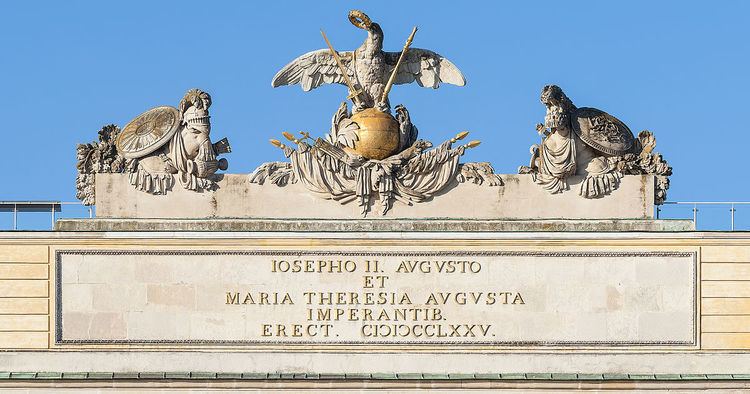Phone +43 1 8791311 | ||
 | ||
Address Schönbrunner Schloßstraße 47-49, 1130 Wien, Austria Hours Open today · 9AM–4PMWednesday9AM–4PMThursday9AM–4PMFriday9AM–4PMSaturday9AM–4PMSunday9AM–4PMMonday9AM–4PMTuesday9AM–4PM Similar Cafe Gloriette, Schönbru Zoo, Hofburg Palace, Albertina, Oben | Küche und Bar | ||
Gloriette david grubbs
A gloriette (from the 12th century French gloire meaning "little room") is a building in a garden erected on a site that is elevated with respect to the surroundings. The structural execution and shape can vary greatly, often in the form of a pavilion or tempietto, more or less open on the sides.
Contents
- Gloriette david grubbs
- Gloriette schloss sch nbrunn hd video tour vienna austria
- Schnbrunn Palace garden gloriette
- Other architectural gloriettes
- Non architectural gloriettes
- References
Gloriette schloss sch nbrunn hd video tour vienna austria
Schönbrunn Palace garden gloriette
The largest and probably most well-known gloriette is in the Schönbrunn Palace garden in Vienna. Built in 1775 as the last building constructed in the garden according to the plans of Austrian imperial architect Johann Ferdinand Hetzendorf von Hohenberg as a "temple of renown" to serve as both a focal point and a lookout point for the garden, it was used as a dining hall and festival hall as well as a breakfast room for emperor Franz Joseph I. The dining hall, which was used up until the end of the monarchy, today has a café in it, and on the roof an observation platform overlooks Vienna. The gloriette's decorative sculptures were made by the famous Salzburg sculptor Johann Baptist von Hagenauer. The gloriette was destroyed in the Second World War, but had already been restored by 1947, and was restored again in 1995.
The gloriette is dedicated as a Monument to Just War, that which leads to peace. With the succession to the throne of Maria Theresa came first the War of the Austrian Succession (1740-1748) and later the Seven Years' War (1756–1763).
The front face bears the following inscription:
IOSEPHO II. AVGVSTO ET MARIA THERESIA AVGVSTA IMPERANTIB. ERECT. CIƆIƆCCLXXV.
("Erected under the reign of Emperor Joseph II and Empress Maria Theresa, 1775.")
The way of writing of the year uses a Latinization of the Greek letter Φ (phi) for 1000. In Ancient Rome it was also common to represent the number 1000 by phi instead of with an M.
An essential part of the inscription is the addition of AVGVSTO and AVGVSTA, used as a link to the first Roman emperor and state god AVGVSTVS by his heirs and successors as finally the Habsburgs in their functions as emperors of the Holy Roman Empire of German Nation.
The gloriette served as the sixth pit stop in the Amazing Race 23.
Other architectural gloriettes
Other buildings designated "gloriettes" are, for example,
Non-architectural gloriettes
The word "gloriette" can also refer to a large birdcage, similar in form to the architectural gloriette, often made out of wrought iron or, more rarely, wood. In the garden of the Priory of Notre-Dame d'Orsan, many wood gloriettes decorate and overshadow the alleys. Climbing plants are often associated with this type of construction.
